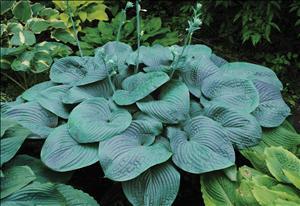
CHEX TV air date: Fri. May 31st, 2013
Click here to watch this episode of ?The Garden Gate.
During prime finch feeding season, almost weekly I have customers coming in to purchase a new feeder because they?ve lost their finches. Initially when they put up their feeder they get lots of finches but at a certain point they stop coming. Have you experienced this?
My first question is ?Where did you get your Nyger seed??? Often the response is, ?Oh, I don?t remember, maybe the grocery store.?? There?s your answer. The seed is probably old and dried out. There is oil inside the shell that the finches are after. If it?s dried out, they aren?t interested.? Generally your Nyger seed should be no more than 6 months old. If it?s any older it could be stale, there is no oil and chances are it?s gone moldy.? You can?t necessarily see the mold, but the birds can smell it and will not eat it. The seed may look dusty and dull when it’s moldy. Who likes moldy food? I know that I don?t.
One way to check the freshness of your Nyger seed is to pinch the seed with your fingernails and see if any oil comes out. The finches use their bills to twist the seed and sip the oil and then drop the shell. If your seed has dried out the birds may check the seed but then leave unsatsified. We receive fresh seed each week that is properly controlled by our supplier Mill Creek, Canada’s?Premier?specialty bird store supplier. ?Buy small quantities of Nyger to ensure that you?ll go through it within a month or two.? All seed should be ?New crop? seed. This means it is from the most recent growing year. Ask your supplier how old their seed is.? If they can’t answer that question, go somewhere where they can. We don?t know how old ?Old crop? seed is. Could be years?
Keep your feeders full! Finches are notorious for leaving a tube feeder half full. They love to be on the highest perches and empty the top half of your feeder and then leave. Don’t just top off your feeder with fresh seed. Empty the older seed (if it’s still good) into a different container, fill the bottom of your feeder with new seed and top it off with the older seed. The birds will probably eat down to that certain level again and you’ll have to repeat the process.? One nice feature of the Aspects Finch feeder is that you can open it very easily from the bottom. I suggest tipping the half full feeder so the older seed goes to the top, opening the bottom and filling from the bottom. This circulates your seed.
Tap your finch feeder to prevent seed from “bridging”. Seed cavities occur when the air is humid. The dampness allows the seed to cling together and will form a cavity when birds select through the portal. This is called “bridging.” Tap your feeder every time you pass by and at a minimum every week.
In the spring when the dandelions are blooming and going to seed, the finches spend more time eating the dandelion seed?than going to your feeder. Birds generally only take 25% of their food from feeders and 75% from nature. So when the natural seeds are available they prefer those and will spend less time at your feeder. You may also notice that birds disappear for a few days each week. They are probably visiting their natural food sources, but will eventually return.
Consider the location of your feeder as well. The most important place to hang a feeder is where you can watch it easily, but I?ve found the goldfinches feel more comfortable with the feeder near trees. I have several feeders hanging around the house and a couple on a pole in the open in the back of the house. All the feeders have birds but I fill the feeders in the trees twice as much.
 My favourite feeders?are either the Droll Yankees or Aspects Finch Feeders. Several birds can feed at a time, the seed stays dry, and they are easy to clean, easy to fill, have lifetime guarantees and are made in the USA. If you’re thinking of switching feeders be aware that finches don’t like change and it may take several minutes to several months for Goldfinches to accept a new feeder. If you run into this problem, take the feeder that they are using away for a few days and put the new feeder in its place. Once they feed from it, you can return the other feeders.? I like to compare it?to going to your favourite restaurant. You know what you’re going to get, and prefer to keep going back instead of being adventurous and going a new restaurant. Birds are the same. They’ll continue to go back to a feeder they are use to before trying out a new feeder.
My favourite feeders?are either the Droll Yankees or Aspects Finch Feeders. Several birds can feed at a time, the seed stays dry, and they are easy to clean, easy to fill, have lifetime guarantees and are made in the USA. If you’re thinking of switching feeders be aware that finches don’t like change and it may take several minutes to several months for Goldfinches to accept a new feeder. If you run into this problem, take the feeder that they are using away for a few days and put the new feeder in its place. Once they feed from it, you can return the other feeders.? I like to compare it?to going to your favourite restaurant. You know what you’re going to get, and prefer to keep going back instead of being adventurous and going a new restaurant. Birds are the same. They’ll continue to go back to a feeder they are use to before trying out a new feeder.
?
Nyger seed used to be called thistle, but it is not the noxious thistle weed we see growing on roadsides. It typically will not germinate under your feeders since it is required that all Nyger seed imported be heat-treated to sterilize the seed.
Nyger seed is one of the favourite seeds of goldfinches, Pine Siskins, Common Redpolls and other small-billed seed-eating birds.? We’ve also seen nuthatches, chickadees, doves, Downy Woodpeckers, and other small birds eating it.
Is it worth the bother? Yes! I love the happy, sweet, song of the Goldfinches. I love the huge flocks of finches that flutter down from the tops of trees as they take their turn at the feeder. I love that I can hang the feeder anywhere because squirrels and other animals don’t bother with Nyjer seed (provided that you have a quality non-chewable feeder). And once you understand the Goldfinches’ needs, they are easy to please and very pleasing to watch.
Happy bird watching!?
 Hosta’s are great plants for the shade. They are very tough and fairly easy to grow. Many of the newer varieties have thicker leaves so slugs are generally not a problem.? There are giant hostas and also miniature hostas.? Tune into our Garden Gate episode to learn more!?
Hosta’s are great plants for the shade. They are very tough and fairly easy to grow. Many of the newer varieties have thicker leaves so slugs are generally not a problem.? There are giant hostas and also miniature hostas.? Tune into our Garden Gate episode to learn more!?












